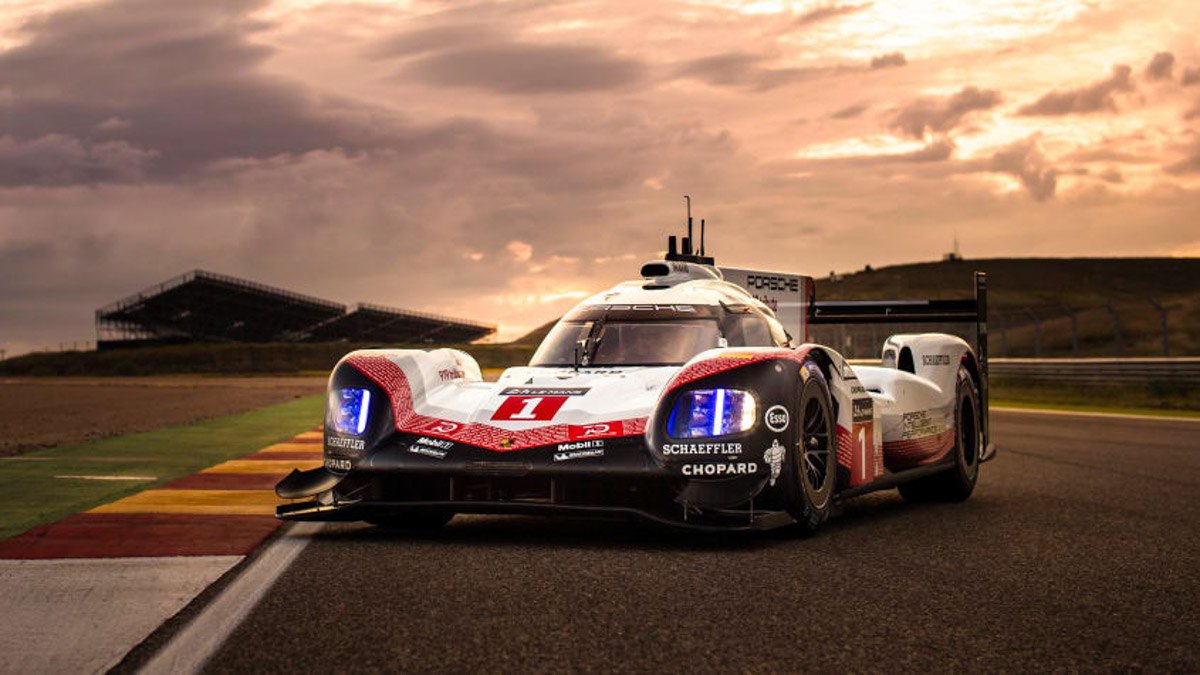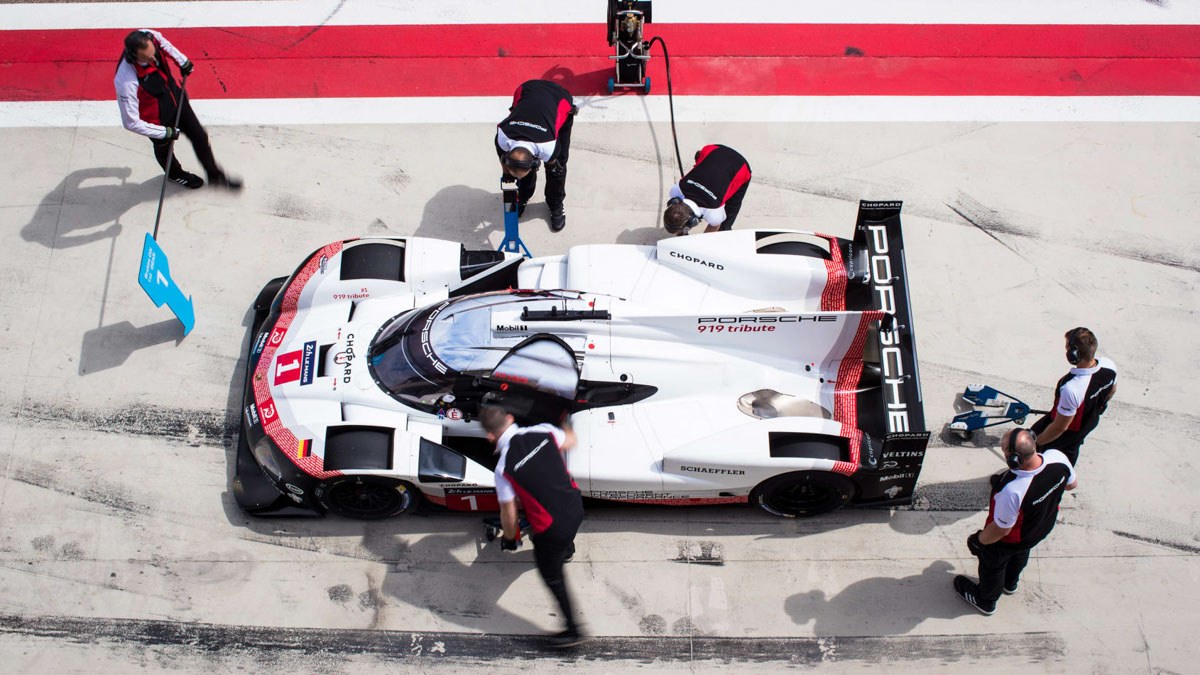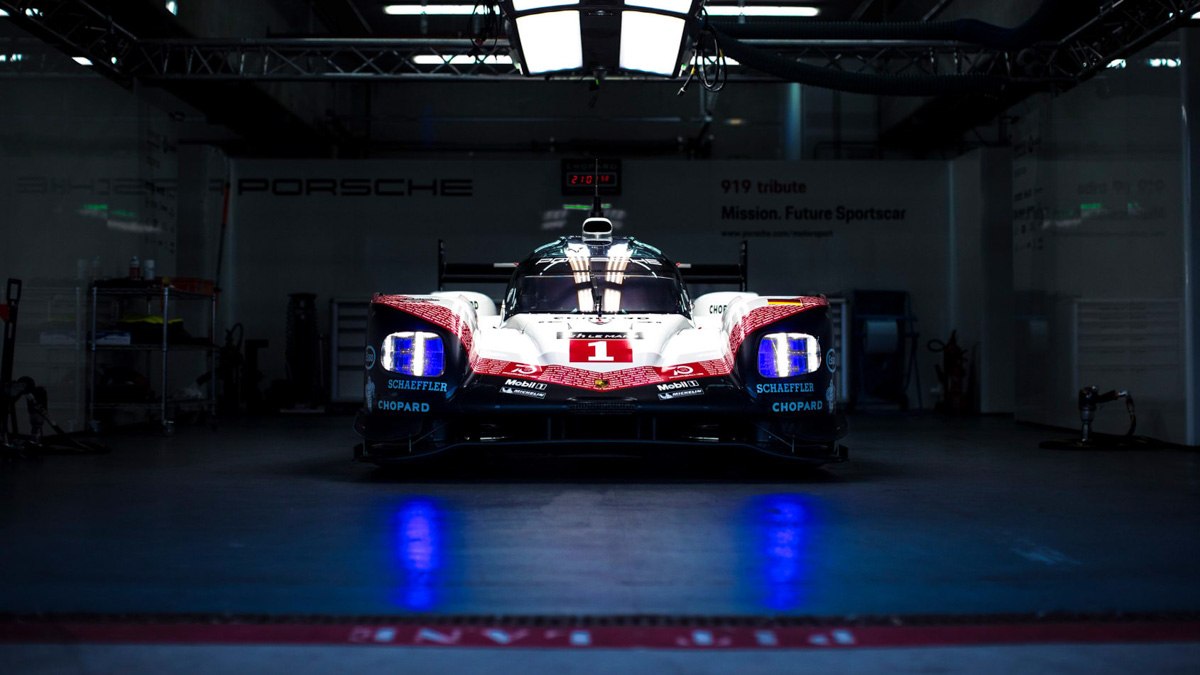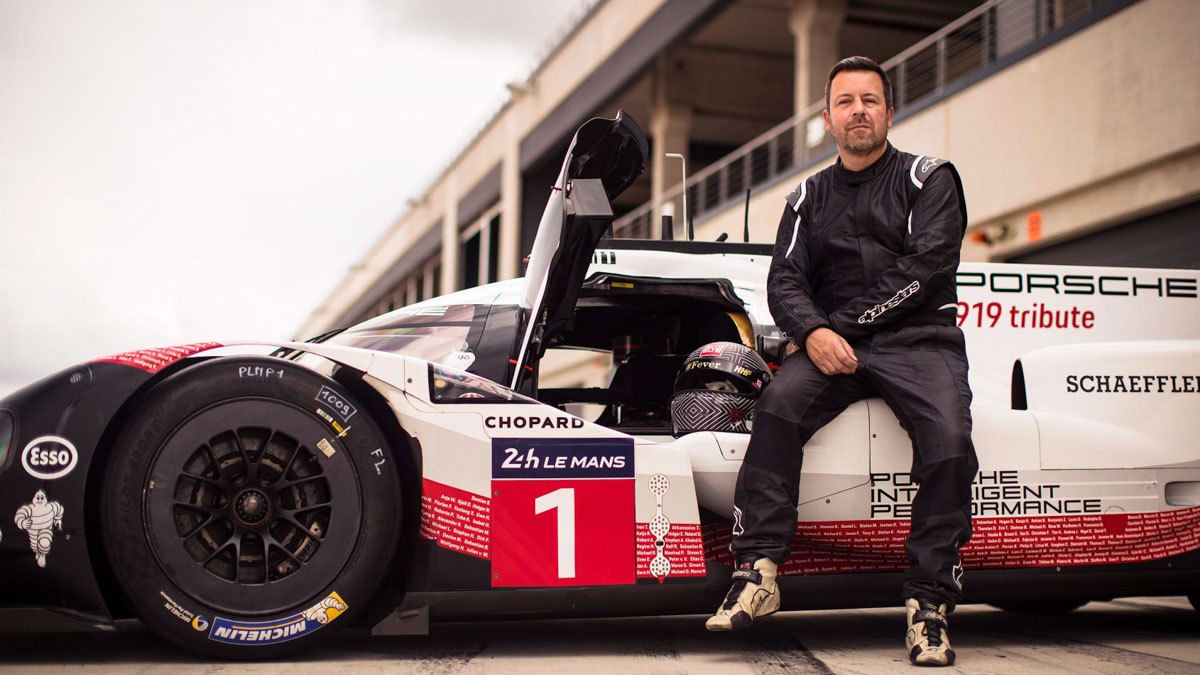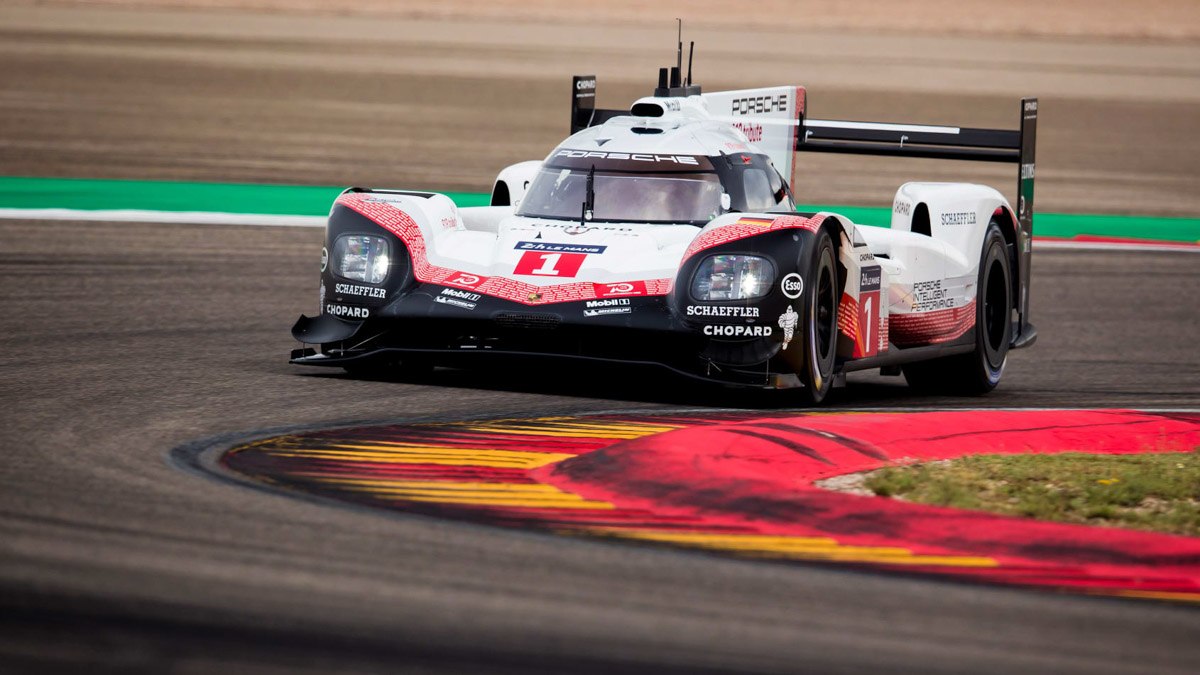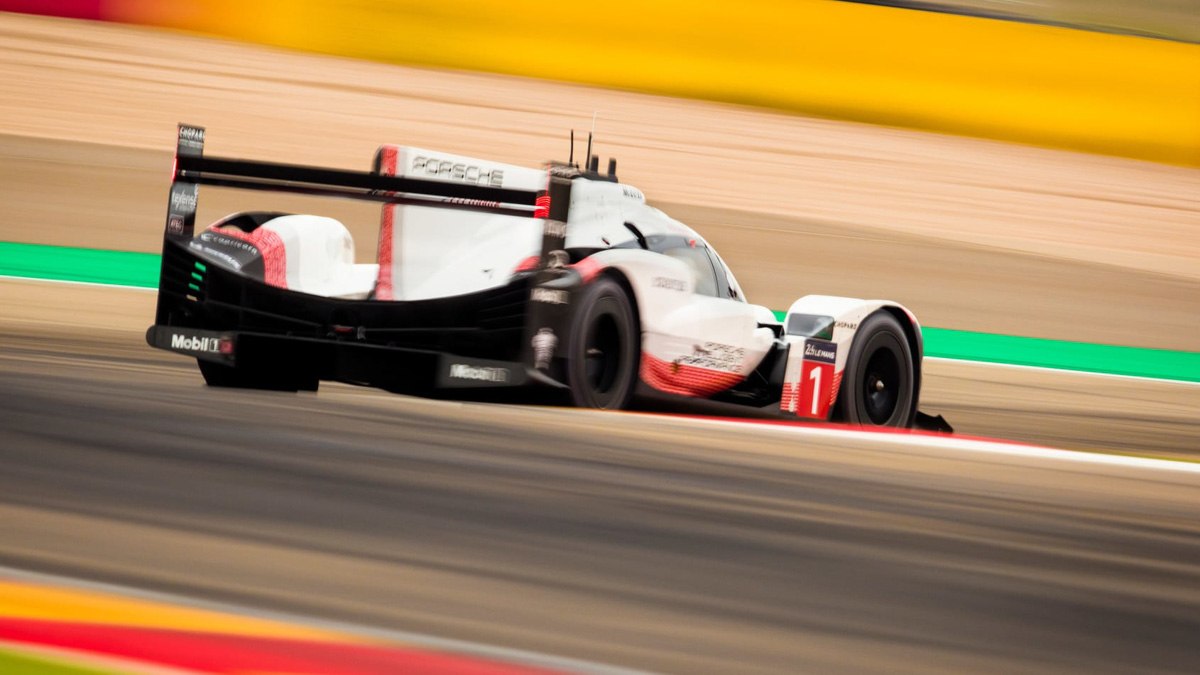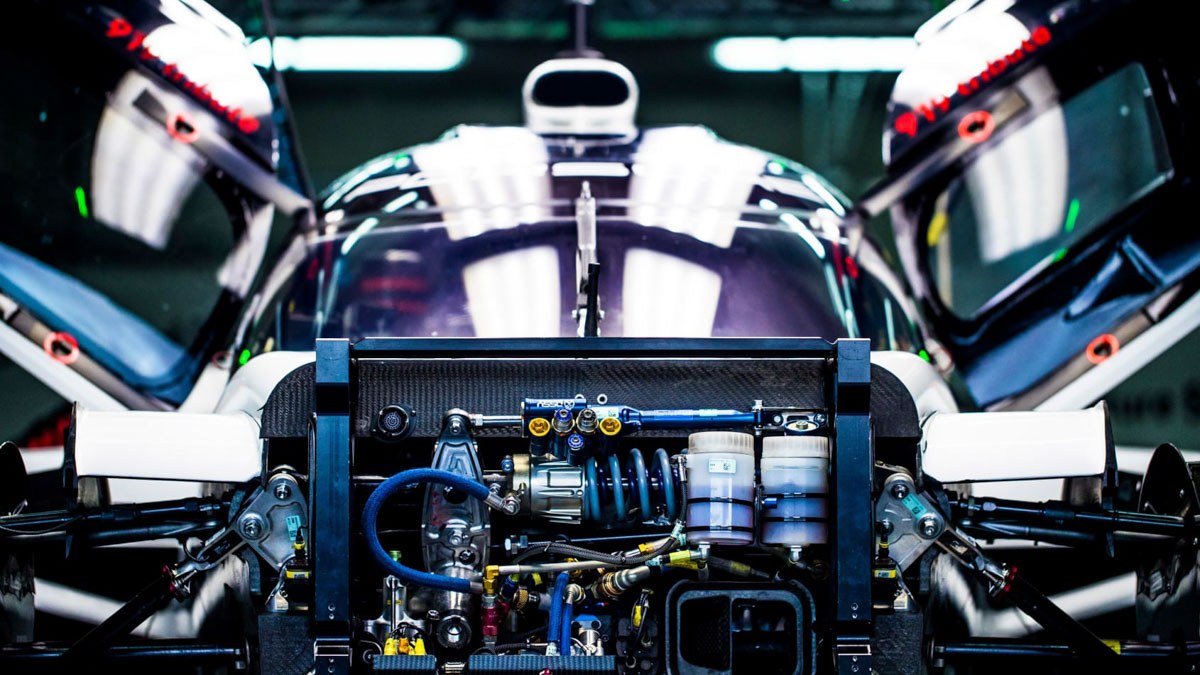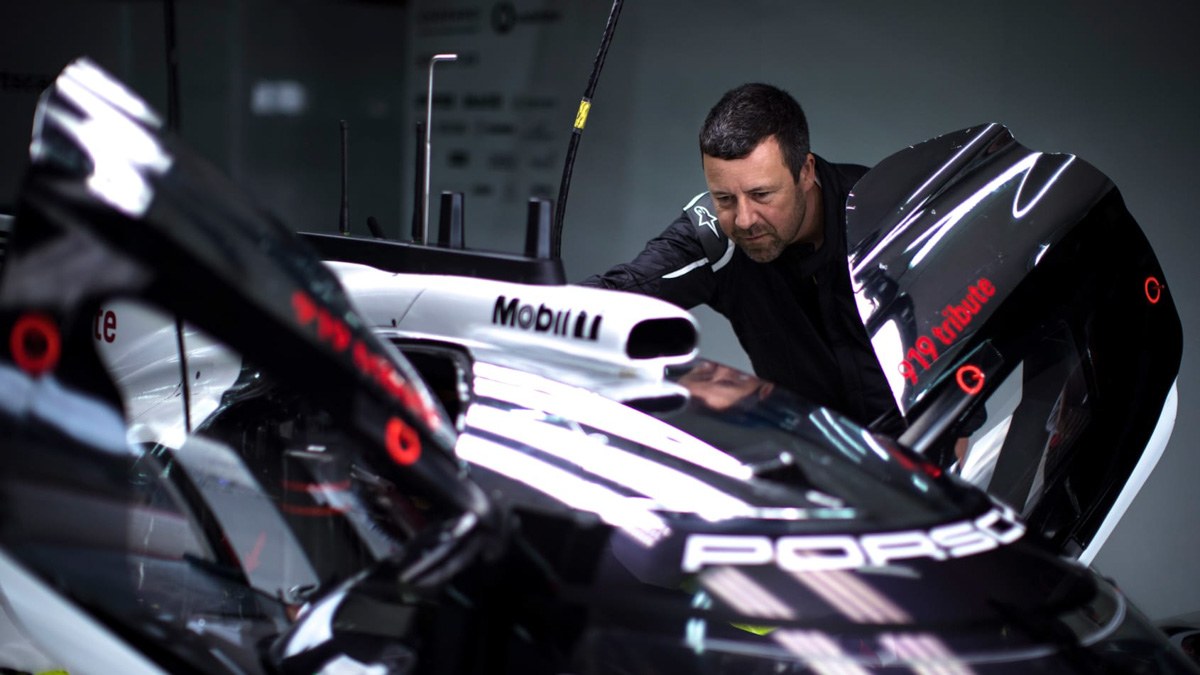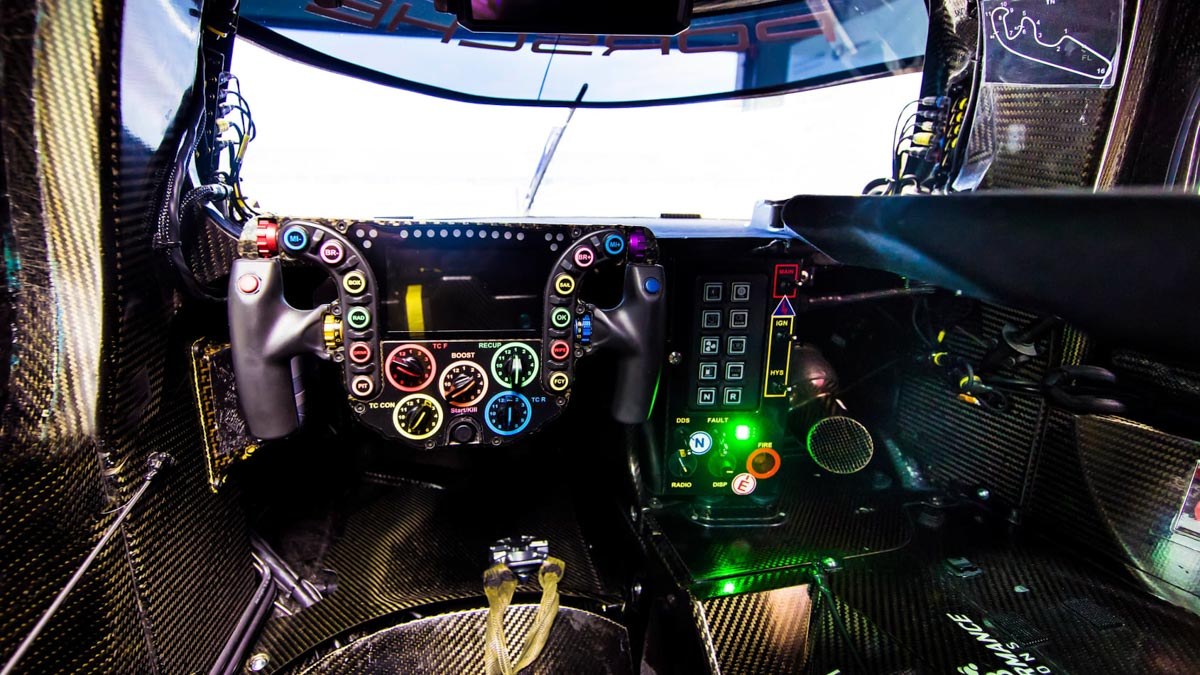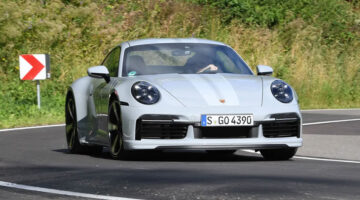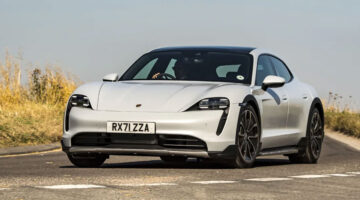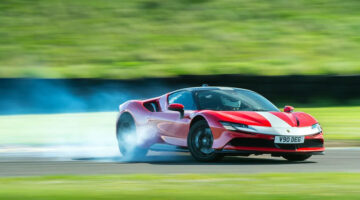Porsche’s 919 Hybrid is one of the most successful endurance racers of modern times. But what’s it like to drive – properly? We get the once-in-a-lifetime opportunity to find out
As an expression of everything Porsche represents in this, its 70th year, the 919 Hybrid LMP1 programme stands tall. Technologically bold, brutally functional and brilliantly fast, it came, saw and conquered in the most ferociously competitive era of top-flight endurance racing the world has ever seen. With a racing record as immaculate as Porsche’s you’d expect nothing less, yet with such an untarnished reputation at stake the risk in making a less than glorious return to the world’s toughest endurance race was considerable. Especially with the World Endurance Championship firmly in the grip of VW Group stablemate Audi.
Thankfully those steely souls at Porsche Motorsport didn’t shy away from the fight, instead developing an entire LMP1 programme from scratch for the 2014 season. Over the next four seasons the 919 evolved through a remarkable series of ever-quicker and more efficient machines that took a hat-trick of Le Mans 24 Hours wins, three World Endurance Championship titles, 17 wins from 34 races (including seven 1-2 finishes), 20 pole positions and 13 fastest laps. These achievements ensured the 919 Hybrid entered the pantheon of iconic racing Porsches and laid claim to being the absolute pinnacle of competitive engineering endeavour.
Media drives of contemporary Le Mans cars are not without precedent. Indeed I’ve been lucky to drive two of Audi’s all-conquering machines – the actual 2011 LM-winning R18 TDI and the 2014 victor, the R18 e-tron quattro – but these tests were deliberately limited to the briefest of tastes. You grab even such fleeting opportunities with both hands, but beyond the simple thrill of getting your lucky arse in a Le Mans winner such limited exposure denies you the story you really want to tell, namely what it’s like to genuinely try to drive one of these spaceships.
So imagine my delight when editor Stuart Gallagher informs me that not only has Porsche extended an invite to drive the final-gen 919 Hybrid, but is promising it will be an opportunity to drive it properly. With the full support of the LMP1 race team and for enough laps to genuinely explore its performance. Phase One of this once-in-a-lifetime opportunity means a trip to Weissach. More specifically Porsche Motorsport’s sprawling purpose-built LMP1 facility. Having negotiated security we are ushered into the building, which has a slightly eerie atmosphere due to the LMP1 programme being mothballed at the end of the 2017 season. There are still people at work, but it’s just a skeleton crew tending to the 919 we’ll drive the following week, and also fettling the 919 Evo, which is skulking in its work bay having set a lap record round the Spa GP circuit. Little do we know that at the time of our visit it is being readied for its attack on the Nordschleife a little later in the year.
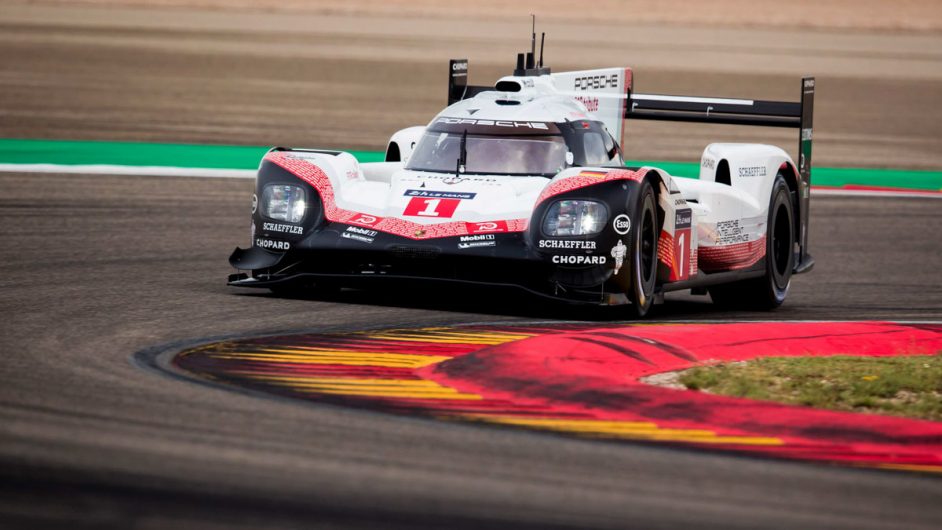
One area still very much in use is the Simulator Room, which is where we’re heading for an intensive session to familiarise ourselves with the car, learn the circuit (Motorland Aragón in Spain), be appraised by Porsche Motorsport engineers and given some virtual coaching on how to operate the quickest and most ferociously complex closed-cockpit race car there has ever been.
A race team’s Sim Room is one of its most closely guarded secrets. I’ve been in a number of them – those at McLaren and Toyota Motorsport being particularly impressive – but the feeling is always the same; that you’re being allowed to enter an inner sanctum. Amusingly, having surrendered our phones and signed all kinds of disclaimers at the main gate, when we breeze into the Simulator Control Room (akin to the mixing desk in a recording studio) there’s the unmistakable whine of a Formula E car coming from the Sim Room itself. Judging by the edgy glances between the Porsche Motorsport engineers we maybe ought to have knocked first.
They needn’t have worried; I’m far too preoccupied by the prospect of ‘driving’ the 919 to worry about getting a scoop on Porsche’s electric single-seater. Like all big sims, the focal point is a dismembered cockpit section perched on a raised platform on the other side of the Control Room’s soundproofed glass. Basking in the sickly glow of a vast wraparound screen it looks like something you’d find in Tony Stark’s Man Cave.
Chris Harris and I have two hours each to try the sim. With one-to-one guidance from the engineers it’s an intensive and invaluable opportunity. Monkey goes first. I stand and watch for a while. We’re both worried motion sickness will take hold of us and cut our sessions short and sure enough after about 20 minutes he’s requesting a break and a glass of cold water. I have a rare pang of conscience so make my excuses and head off for a seat fitting while he swallows hard and tries not to be sick.
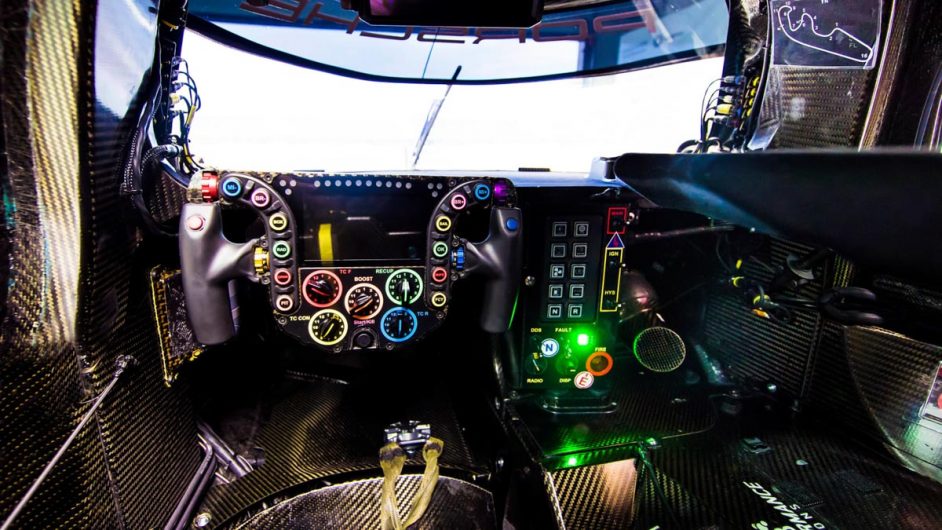
The fitting is my first chance to get behind the wheel of a proper 919; not the easiest process as I soon discover. Perched on the left-hand sidepod, you grip the upper edge of the dorsal air intake’s nostril with your right hand while simultaneously drawing your knees up and threading your legs down into the cockpit, followed by your hips, torso and shoulders. If you’re a lithe and athletic professional racing driver this motion is a well-oiled slither, apparently as simple as pulling on a pair of trousers. If you’re a lumpy and arthritic journalist it’s like fighting your way into a wetsuit. Once in you’re snug as a bug, feet high, legs gently bent at the knee, elbows tucked in and shoulders clamped in place. It’s oddly natural, like sitting in a loose, upright foetal position. The cockpit it confined, but beautifully laid out, with big, clearly labelled switches that are scaled and positioned to be readily found and used in a high G-force environment. The steering wheel is actually an oblong, with squidgy, super-tacky grips and peppered with push buttons and rotary knobs, again with ultra-positive haptics for ease of use.
The fitting is perfect prep for my sim session, as the initial creep of claustrophobia is out of my system by the time I enter the stuffy, windowless Sim Room. It has a heavy atmosphere that hums with electrical energy and smells like the TV and hi-fi section of a large department store. It seems odd to be dressed in civvies, but race boots and gloves are all you need, plus a headset for two-way comms with the engineers in the Control Room. I’ve never been to Motorland Aragón, so I’m hugely grateful for the chance to learn it in pixelated form. Likewise to become familiar with the protocols associated with starting the 919. We’ll be pulling away on e-power alone, spared the challenge of smoothly managing a grabby carbon clutch, but there’s plenty to learn. There’s also the safety procedures that need to be drilled into us due to the lethal voltage contained within the hybrid system.
The sim is the best I’ve driven. Maybe it’s because I’m completely focused on learning as much as I can about the real 919, but where I normally struggle to submit to the driving sensations the simulator is trying to replicate, I’m soon completely immersed in the virtual challenge of piloting a 919 Hybrid around Motorland Aragón. By the time we say our goodbyes and head for Stuttgart airport the test is beginning to feel very real indeed.
Just a handful of days later we’re in the wilds of Spain. Surrounded by olive groves and mountain scenery, the Tilke-designed Motorland Aragón is so remote it’s like some kind of secret military facility; Area 51 for teams wishing to pile serious kilometres on cars still in development. All the big teams come here for extended endurance testing. Consequently Porsche Motorsport knows Aragón very well, having used it as the backbone of its early endurance testing of the first-gen 919, and a reliable base for its annual, repeated and entirely sadistic 30 and 40-hour tests conducted in the build-up to each and every Le Mans 24 Hours. The 919 could probably drive round here on its own.
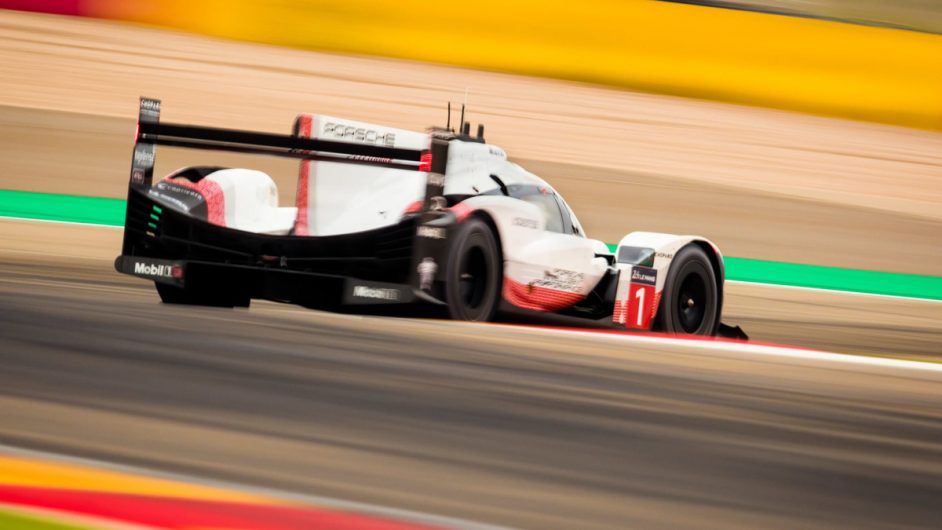
The pit garage is an ordered hive of activity as the team fusses around the 919, tending to its every need with race-honed drills that are clearly second nature. With its bodywork removed the 919 seems insanely complex and unbelievably compact. The petrol engine – a turbocharged 2-litre V4 developing 500bhp – is the size of a small overnight bag and buried beneath pipework associated with the exhaust energy recovery system, which contributes 40 per cent of the total energy recovered. At the front end the MGU (Motor Generator Unit) contributes the remaining 60 per cent, with the total 400bhp or more of hybrid energy transmitted via the front axle. That’s a combined total of around 900+bhp in a car weighing 875kg before fuel or driver.
Strapped in the car with the door closed and crash helmet on, the hustle and bustle is muffled and remote. It feels very strange to be at the epicentre of all this activity, but the apprehension and weight of responsibility that’s usual in these highly unusual circumstances is at least partially mitigated by having those sim laps logged in my head. I’m still daunted by what’s to come, but at least I know where the track goes, how the car operates and what it’s capable of doing. Whether I can translate that virtual knowledge and experience into the reality of driving the 919 is something I’ve never been more determined to find out.
Pushed out onto the pit apron on go-jacks the 919 and I are spun through 90 degrees to face the pit exit. Castors removed there’s a sharp hiss and the car drops onto its Michelin slicks. A calm voice fills my ears with simple reminders on which buttons to push. Then we pull away, e-motor whirring as the 919 accelerates to 64kph before the petrol motor kicks-in with a serrated rasp, at which point I de-latch the pit speed limiter and accelerate out onto the circuit.
The 919’s light steering and firm pedal action feels oddly familiar and beautifully precise and the track is spooling through the windscreen just as it did in the sim. We had the option to drive a 911 round here first, but I didn’t see the point. Driving a mere mortal road car would only dumb down my sim-honed expectations and snap me from the downforce-indoctrinated trance I’ve tried so hard to sustain since the visit to Weissach.
Porsche has allowed me three seven-lap runs in which to test the 919 and myself. That may not sound like much, but it equates to 15 flying laps; more than enough to probe the limits of car and confidence. Or indeed exceed them, which doesn’t bear thinking about. There’s talk of spindly neck muscles wilting before each of those seven-lap runs is up, which is something I hadn’t considered. We’ll have full access to data traces for each of our runs, including an overlay with that of Neel Jani, factory Porsche driver and pilot of the 919 Evo during its record-breaking lap of Spa.
I’ve told myself that by the end of the test I will have kept my right foot pinned through the flat-out corners. It’s something I’ve never managed to do in a high-downforce car, and something I’m never going to be better prepared for than now. The first few laps leave me seriously questioning whether that’s a good idea, but such is my belief in the car and so powerful my desire to experience the 919’s cornering capability in full effect, I pluck up the courage and do it.
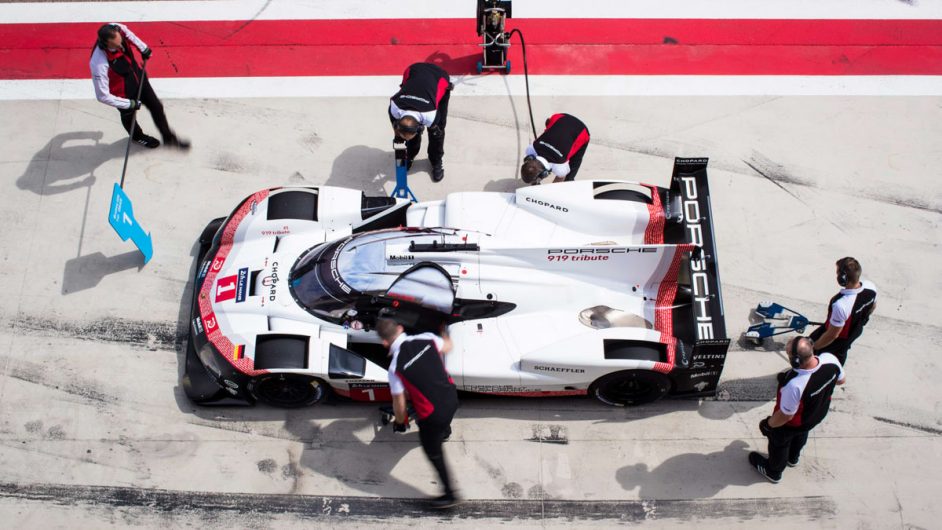
If you’ve ever donned a pair of beer goggles you’ll be familiar with their power to change the way you see things. Downforce has much the same effect, with the ability to transform a sequence of tricky third and fourth-gear corners into a headlong sixth-gear rush. You’re not drunk exactly – the buzz only truly kicks in when you get out of the car – but once you’ve tasted the neck-snapping nectar nothing is ever quite the same again. The world is certainly very different viewed from the cockpit of a 919 Hybrid cornering as its designers intended. Especially through Aragón’s brain-scrambling run from the apex of the third-gear turn one all the way to the crazily compressed braking zone for turn five, which you hammer into at 257kph in sixth gear.
Likewise the run from the ultra-tight second-gear chicane of turns eight and nine through the endless turns ten and eleven, which sees you sustain 4.1G lateral acceleration for over four seconds as you pin the throttle through second to seventh gears. The average cornering force experienced across a lap is 2.5G. Peak braking? 2.4G. Peak straight-line acceleration? 1.8G. Whether stopping, going or cornering, the 919 is a beast beyond comprehension. What I wasn’t expecting was the revelation that once you trust the downforce it immediately frees up your concentration to focus on the areas of the lap that really make the difference. That’s to say the braking areas and getting the cleanest possible exit from the key corners. Once deploying its precious electrical energy you don’t want to interrupt the propulsion with a lift of the throttle, so you have to be both ultra-precise and super-committed. Fall short in either of those areas and you squander speed; a minor personal annoyance in a test like this, but a critical error in a race situation.
One thing you learn quickly is the 919 doesn’t like to be hustled. At least not in the conventional sense. With front and rear axles powered by different sources (V4 rear, lithium-ion batteries front) and with separate traction control systems managing each end it prefers to do things in straight lines. Chase the throttle too soon in a slower corner before you’ve unwound the steering lock and the torque will wrench the tyres free from their immense hold on the tarmac. Not for long, but with a snap that requires immediate correction and with an abruptness that warns you not to do it again.
It’s also a challenge to get your head around the braking – not just because the stopping power is extraordinary, but because of the additional effect of the Motor Generator Unit, and because you have to bleed off the pedal as downforce reduces. Watching from the outside it might seem like you can just smash the pedal, but if you over-drive it’s easy to grab an inside front wheel in the final moments of braking, especially if you need to adjust your angle of approach. Get it right – that’s to say perfectly slowed, turned, aimed and fired down the next straight – and it’s like riding a champagne cork as it leaves the bottle.
I’ve driven and raced some remarkable cars over the years, but nothing comes close to the 919 Hybrid. That’s as much due to the unique nature of the opportunity as the car itself, for without the thorough preparation and absolute trust Porsche afforded the small handful of international media invited to drive the car I’m certain I’d have done little more than scratched the surface of its capabilities. As it stands I doubt I’ll experience anything quite like it ever again.
This article originally appeared at evo.co.uk
Copyright © evo UK, Dennis Publishing

